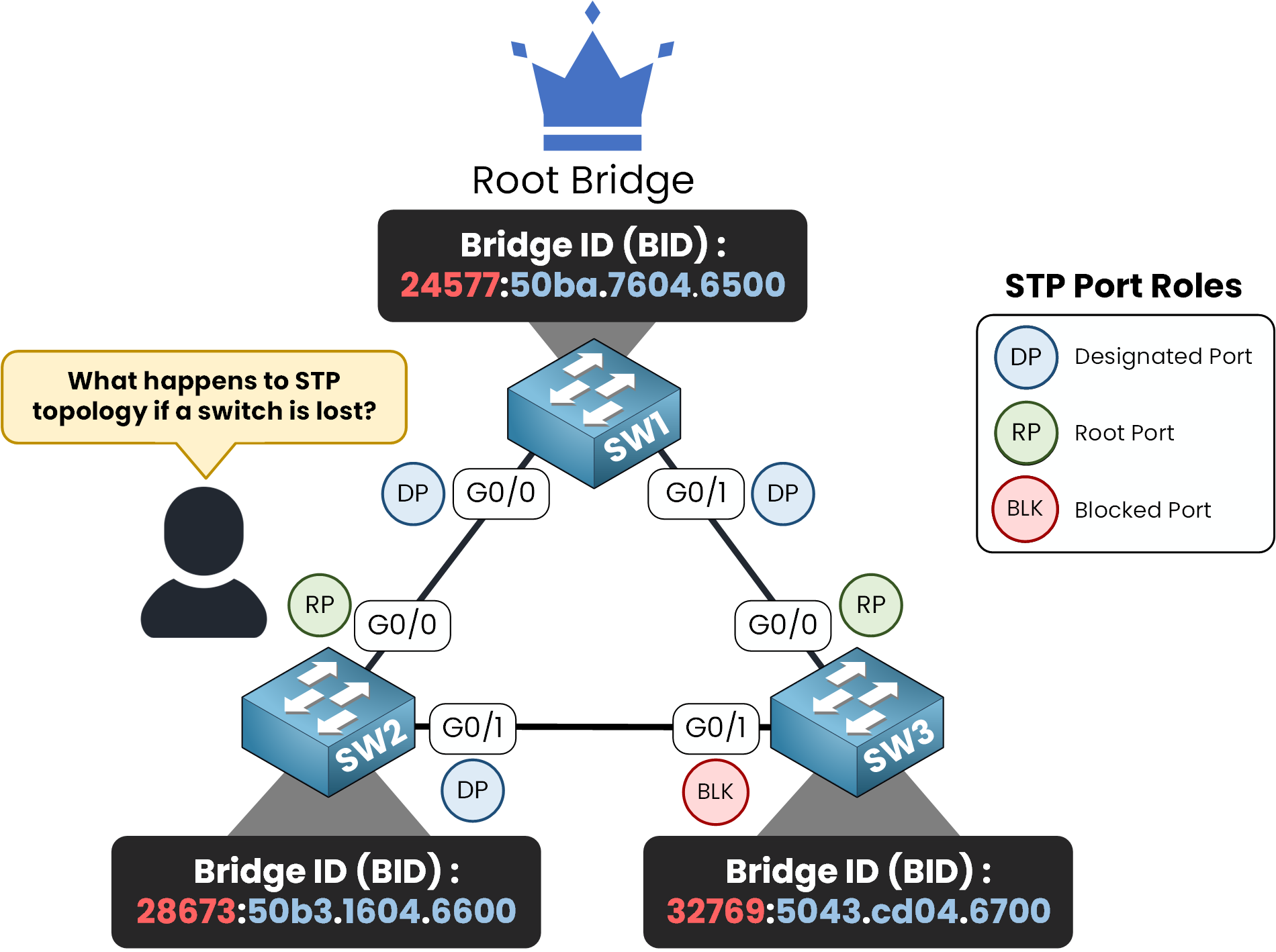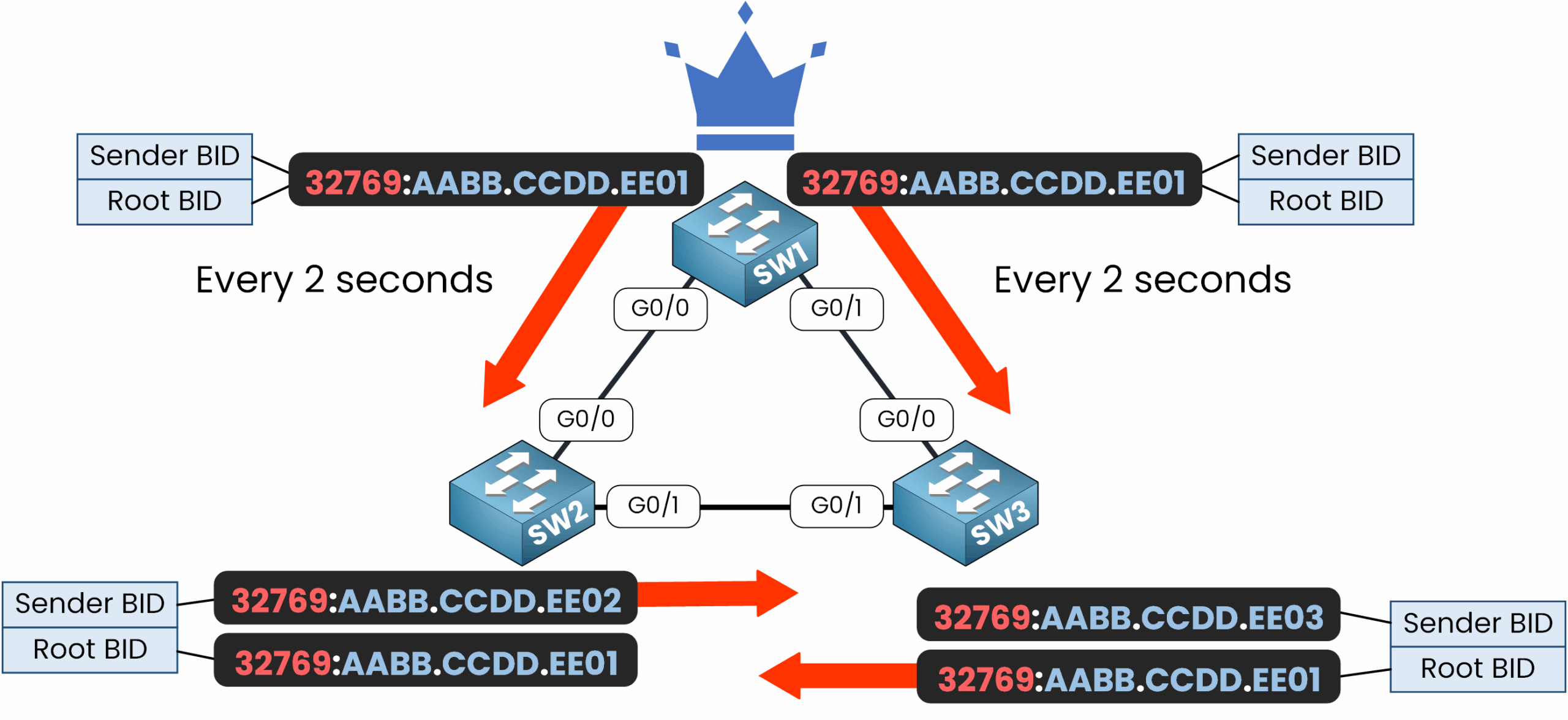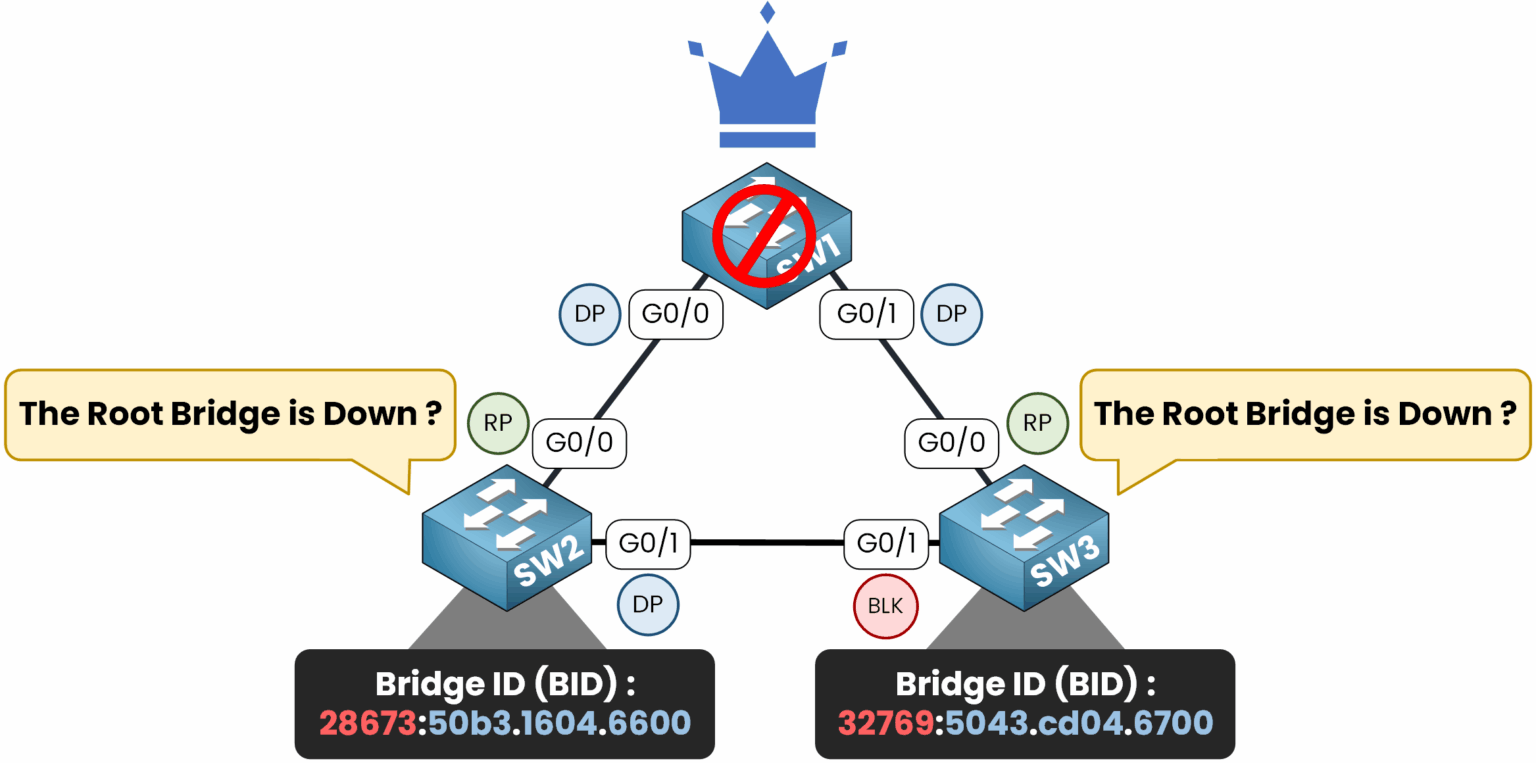In the previous lesson on Spanning Tree Port Roles, we assigned Root Ports, Designated Ports, and Alternate (Blocked) Ports to keep our network loop-free.
However, Spanning Tree Protocol (STP) does more than just assign roles it also controls how the network converges when a switch fails in the topology.Convergence refers to the process of ensuring all switches agree on a new Spanning Tree topology and can forward traffic effectively after a change, such as a link failure or the addition of a new device.

Figure 1 – STP Port Roles and Topology Change Scenario
This process relies on STP Timers and STP Port States, which together dictate how long it takes for the network to adapt to changes while preventing loops during the transition.
Convergence ensures the following:
Stable Topology: All switches agree on the Root Bridge and the port roles for each segment.
Efficient Traffic Flow: Traffic resumes efficiently after a topology change, avoiding loops.
Minimal Disruption: The network adapts without causing packet loss or instability.
Answer the question below
Before diving into the Port States, ensure you understand the role of STP Timers, as they govern the duration and transition between states.
Hello Timer
Purpose: Determines how often the Root Bridge sends BPDUs (Bridge Protocol Data Units) to communicate topology information.
Default Value: 2 seconds.
Significance: Once the Root Bridge is elected, it is the only switch that generates and sends BPDUs to the entire Spanning Tree topology. These BPDUs serve to announce the Root Bridge’s presence and maintain the topology.

Figure 2 – Hello Timer and BPDU Forwarding in STP
The non-root switches in the network do not generate their own BPDUs. Instead, they forward the BPDUs received from the Root Bridge to their neighbors, including their own sender Bridge ID, ensuring the topology remains synchronized.
Forward Delay Timer
This timer is important to understand to fully graps the concept of STP port states, you will have to recheck here,
Purpose: Controls the time a port spends in the Listening and Learning states before transitioning to Forwarding.
Default Value: 15 seconds per state .
Max Age Timer
Purpose: Defines how long a switch retains BPDU information from the Root Bridge before considering it invalid.
Default Value: 20 seconds.
Significance: Ensures switches detect and react to topology changes (For example when Root Bridge crash)
Answer the question below
What is the default Hello Timer in STP (seconds)?
To explain the port states, let’s use an example scenario where the Root Bridge fails, triggering a topology change.
Initial State: Stable Topology
The Root Bridge sends BPDUs every 2 seconds to maintain the topology.
Non-root switches forward these BPDUs while retaining their roles (Root Port, Designated Port, and Blocked Port).

Figure 3 – Stable Topology Before a Topology Change Event
Step 1: Root Bridge Failure
The Root Bridge stops sending BPDUs.

Figure 4 – Root Bridge Failure
40 % Complete: you’re making great progress
Unlock the rest of this lesson
If you’d like to continue your CCNA journey, simply create your free account.
Access all CCNA lessons
Practice with hands-on labs
Train with Practice exams and Quizzes
Progress tracking in your dashboard
Made by network engineers - CCNP certified
learners globally
STP Timers & STP States
STP timers and port states determine how long a network takes to adapt after a topology change while keeping loops under control. This lesson explains their role in convergence and why slow transitions can disrupt modern applications.